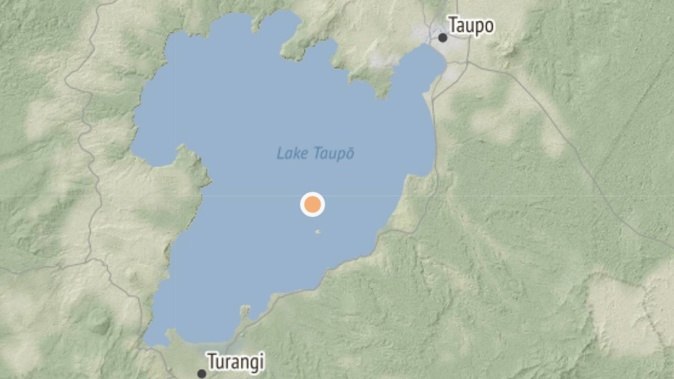
Scientists are keeping the official alert level of New Zealand’s best-known super-volcano slightly raised, as another earthquake beneath Taupō signals an unrest period still rumbling on.
It’s now been nearly one year since scientists first noticed an increase in earthquakes and ground movement at the enormous caldera system that Lake Taupō partly covers – and around six months since GeoNet nudged its Volcanic Alert Level (VAL) from zero to one for the first time in the programme’s 20-year existence.
By early 2023, scientists had already recorded more than 1600 quakes: notably a 4.2 event in September and a 5.7 event on November 30 that triggered a small lake tsunami.
Then, at 4.13pm on Sunday, came another 4.4 quake centred around the same area – near Horomatangi Reef, just southwest of Taupō, where researchers recently pin-pointed a 250 cubic km magma chamber.
The latest event, the result of a fault rupture within 10km of the surface, caused shaking felt mostly along the lake shore, along with more than 20 aftershocks so far.
While the overall pattern of seismicity over the 10-month unrest sequence pointed to magma and fluid moving about within the system, the precise driver of the latest quake was unclear.
“The recent unrest is very likely driven by magma movements and the related movement of fluids, and they can trigger earthquakes – but [they] can also be triggered by long-term plate motion in this area,” GeoNet duty volcanologist Dr Yannik Behr said.
“So, it’s difficult to attribute one particular cause for an earthquake, but we think it’s probably related [to the unrest].”
/cloudfront-ap-southeast-2.images.arcpublishing.com/nzme/YOVJIHBDIRHSZMOHHCTM5QJZAE.jpg)
Earthquakes recorded at Taupo volcano since its latest period of unrest began. Source / GNS Science
- Quake swarm reveals NZ's hidden magma reservoir
- Rumbles at unsettled Taupō supervolcano may drag on into 2023- scientist
- Taupo supervolcano eruption: Just how much time will we get?
Although there’d been a noticeable decline in earthquake activity since November – with between 10 and 50 recorded each week – Sunday’s event was preceded by a slight uptick.
“We also noticed a small signal on our newly installed tsunami sensors in the lake at the time of the earthquake, but more analysis is required to find out its cause.”
Overall, Behr said the number and size of observed quakes was within expectations for a volcano at “minor” volcanic unrest.
“This is confirmed by our other observations to date which show continuous activity, but no significant changes compared to the previous months of unrest.”
As for how long the episode was likely to drag on, scientists couldn’t say.
Earlier this year, GNS Science volcanologist Brad Scott said the average duration of larger bouts on unrest over the last 150 years was about eight months – and he gave a 50-50 probability of it becoming a lengthier-than-normal period.
“In the past, we’ve seen unrest episodes that have lasted much longer than this,” Behr said, noting one that unfolded over three years in the late 1990s.
“So, these can last for quite some time.”
Nonetheless, the chances of the episode turning into something much more significant were small, and of 17 such periods over 150 years, none ended with a big eruption.
“We can’t exclude the possibility of one, but we don’t see any signs of an imminent eruption,” Behr said.
/cloudfront-ap-southeast-2.images.arcpublishing.com/nzme/HJTTUWW4AZDMHD3G5WZLDMKM5U.jpg)
Source / GeoNet
“For example, one thing that we look for certain types of seismic activity that shows really shallow magmatic or volcanic fluids, and we don’t see that at the moment.”
Over its 300,000-year eruptive history, Taupō - regarded as the world’s most frequently active super-volcano system – has unleashed some of the biggest blows ever documented.
They include the gigantic Oruanui eruption around 25,400 years ago - in which more than 1100 cubic kilometres of pumice and ash was spewed into the planet’s atmosphere, and as far afield as Antarctica.
Taupō's most recent major episode, some 1800 years ago, fired out more than 120 cubic km of pumice and ash and obliterated the surrounding landscape, while widening the basin that Lake Taupō mostly fills today.
In any given year, however, the statistical probability of something like that occurring remained slim.
One 2020 modelling study put the annual probability of a Taupo eruption at any size at a very low chance of one in 800 – or at between 0.5 and 1.3 per cent - within the next 500 years.
Take your Radio, Podcasts and Music with you









